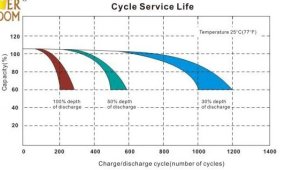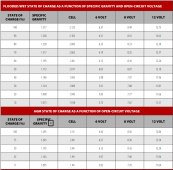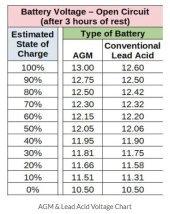Checkthisout
Solar Wizard
- Joined
- Nov 14, 2021
- Messages
- 4,810
If I have a flooded lead acid battery with a 240 amp hour rating or whatever, what will the terminal voltage be after pulling 240 AMP hours out of the battery?
In other words when a manufacturer is calculating AMP hours to put on the sticker, they start with a fully charged battery and place a load on it.
Once the voltage hits "X" the amount of energy that was pulled is measured and that is the AMP hour rating.
What is "X" voltage?
In other words when a manufacturer is calculating AMP hours to put on the sticker, they start with a fully charged battery and place a load on it.
Once the voltage hits "X" the amount of energy that was pulled is measured and that is the AMP hour rating.
What is "X" voltage?






